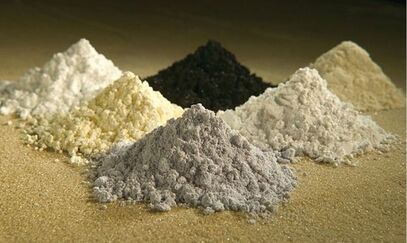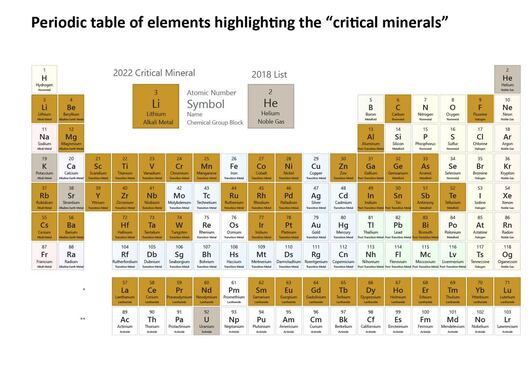|
A closed coal mine just south of Morgantown may actually signal the future of the coal industry through a mining by-product known as Rare Earth Elements. While they aren’t household names, Rare Earth Elements are used in many products. Cell phones, computers, magnets, and especially in national defense hardware. When asked if the old coal mine is now like a potential gold mine because of rare earth elements, Dr. Paul Ziemkiewicz, WVU Professor and Director of the Water Research Institute, responded, “That’s a nice way of putting it.... The red phosphor in your television screen, for example, is europium. That’s a Rare Earth Element,” said Dr. Ziemkiewicz.
|
Dr. Ziemkiewicz is one of those spearheading the one-year-old Rare Earth Elements Extraction Facility on West Virginia University’s campus. Here’s how it works. Coal mines produce pollutants known as acid mine drainage. When it rains, water passes through the old mine and down a hill carrying the acid mine drainage. But the state built a water treatment plant here. Water comes in and goes through a clarifying process. The clean water is safely released, but the sludge is pumped back up the hill where it dries and hardens. That sludge – and some of the water – contains those Rare Earth Elements that can be processed and sold.
Right now the United State imports over 80% of its Rare Earth Elements from China. But experts say developing more domestic sources, will help the U.S. economically and environmentally. “The value in that sludge and this was a few cells ago, was about $850,000,” said Dr. Ziemkiewicz.
Right now the United State imports over 80% of its Rare Earth Elements from China. But experts say developing more domestic sources, will help the U.S. economically and environmentally. “The value in that sludge and this was a few cells ago, was about $850,000,” said Dr. Ziemkiewicz.
The U.S. Department of Energy is seeking a domestic source of rare-earth elements (blue and red), particularly those it labels as critical to the U.S. economy (red).
But there might be another benefit beyond the income. The whole process could help restore some of the environment at mine sites. “By extracting the Rare Earth Elements, you’re also cleaning up the water. So, the DEP is 100% supportive,” said Rob Rice, West Virginia Department of Environmental Protection. “Coal ash and waste products from coal mining is a big problem. If there are some Rare Earths in there that we can generate, and generate some jobs about that. We certainly want to take a look at it,” said Bill Price, of the West Virginia Sierra Club
With the coal industry across Appalachia having lots of ups and down, extracting Rare Earth Elements could boost the economy in coal communities hit by hard times. “This mine shut down about 20-years ago, but it’s still producing a lot of Rare Earth Elements,” said Dr. Ziemkiewicz.
Editor's note: AES recommends a peer-reviewed article about Rare Earth Metals in coal ash.
This article was reprinted with permission from 13WOWK
Articles in this issue of Energy Today - the search for more energy "in the ground":
With the coal industry across Appalachia having lots of ups and down, extracting Rare Earth Elements could boost the economy in coal communities hit by hard times. “This mine shut down about 20-years ago, but it’s still producing a lot of Rare Earth Elements,” said Dr. Ziemkiewicz.
Editor's note: AES recommends a peer-reviewed article about Rare Earth Metals in coal ash.
This article was reprinted with permission from 13WOWK
Articles in this issue of Energy Today - the search for more energy "in the ground":
- Seven Trends Shaping the Future of Mining and Minerals, by Nicolas Maennling and Perrine Toledano
- The Prize, an excerpt by Dan Yergin
- The Next Gold Rush - Mining the Deep Sea, by Isabella Grabski
- Geothermal Energy: Saving the Planet - or Causing Lots of Earthquakes, by Nathanael Johnson
- Bonus article for Premium Members (by request only) - Carbon Sequestering Fungi, by Bob Yirka




